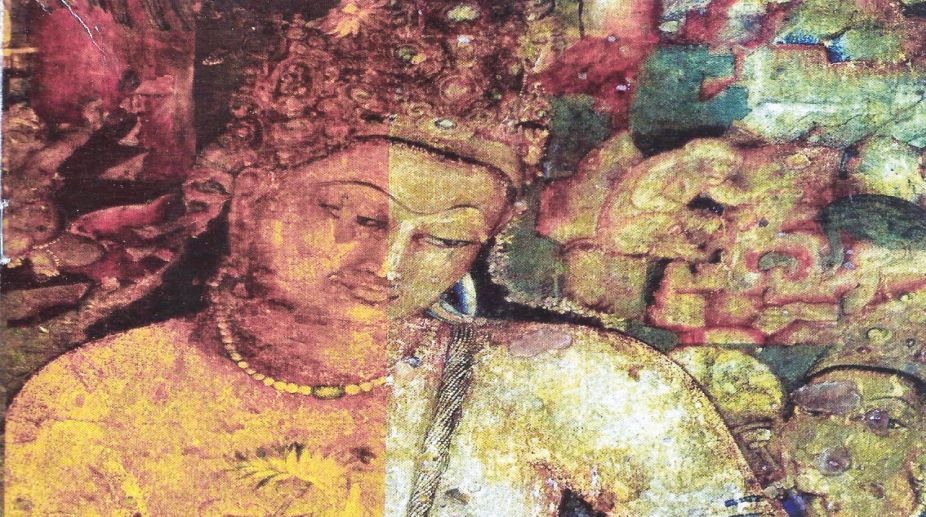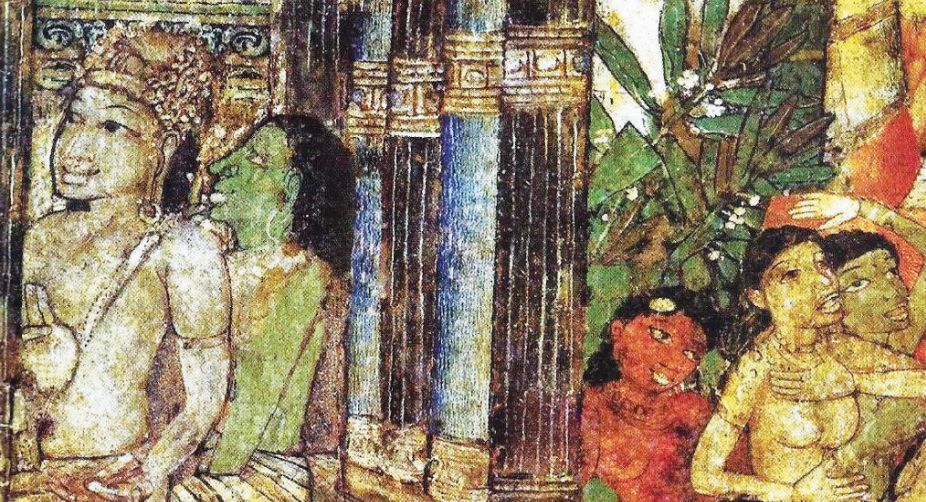Buddha Bhoomi event concludes in Thailand amid chants of Shri Ram, Lord Buddha
The Buddha Bhoomi event was successfully concluded in Bangkok, the capital city of Thailand on Sunday.

Ajanta rock cut cave mural-BC 2nd to AD 7th century
Ajanta cave wall spanning murals ~ photographed and digitally colour pigment corrected ~ were on view recently at the Capital’s Indira Gandhi National Centre for the Arts.
This first time ever photographic exposition of heritage art-work, dating from BC 2nd century to AD 7th century, that have suffered ravages of time and weather, proved popular with schools sending groups of students to catch up with history.
As part of their “sadhana”, talented Buddhist monks of those early years engaged with dedication, in carving out pillared “vihara” congregation halls and temples in 29 caves, aligned on a concave cliff face.
Advertisement
They illustrated for posterity, episodes from the Jataka tales of re-incarnation of Tathagat ~ the enlightened Buddha ~ who delivered discourses on ordering of life.
The Ajanta murals represent the highest achievement of Indian Buddhist Art ~ the beginning of a glorious chapter in world history of wall paintings. They are examples of mural art of that time in terms of their creativity, natural materials used and techniques of preparing the surface, or layering, besides the skill and devotion they are imbued with.

This debut of Buddhist cave art murals, with digitally enhanced photographs in the National Capital, was the result of an idea sparked in 1989, in the mind of a young Pali language scholar Prasad Pawar, at the College of Arts of Pune University. Pali was a later day vernacular form of Sanskrit. Earlier, The Buddha delivered his discourses in Magadhi Prakrit to reach a wide audience.
Subsequently, Asoka’s rock edicts were principally carved in Kharoshti script with Prakrit-Brahmi language.
Swami Vivekananda had said, “Take a thought and make it your life.” For restorer, conservationist and artist-photographer Prasad Pawar, that was the inspiration that drove his 27 years of “desh seva sadhana” to preserve a lost art for generations to come.
Extending from east to west for 600 metres, the rock cut art galleries are situated 100 km from Aurangabad and 60 km from Jalgaon, in Maharashtra.
Location of this monastic establishment at Ajanta was due to the proximity of an ancient trade route. Travellers tarried a while, took a break to look around and invariably left donations that sustained the monasteries.
The two massive Greco-Indian sculptural art form Buddhas ~ destroyed by the iconoclast Taliban in 2001 ~ in rock cut alcoves, along a cliff face in Afghanistan’s Bamiyan valley, were similarly positioned on a trade route.
Buddhist cave art in Dunhuang ~ at the eastern convergence of north and south Chinese Silk trade routes to the Roman Empire ~ too were strategically located, to attract contributions from the devout, to sustain monasteries.
In Central Asia’s Kazakhstan, rock-face Buddhist art-works are located along an old trade road close to Kapchegai Lake ~ a holiday resort easily reached from the pre-1991 Soviet Union era provincial Capital Alma Ata.
Advertisement